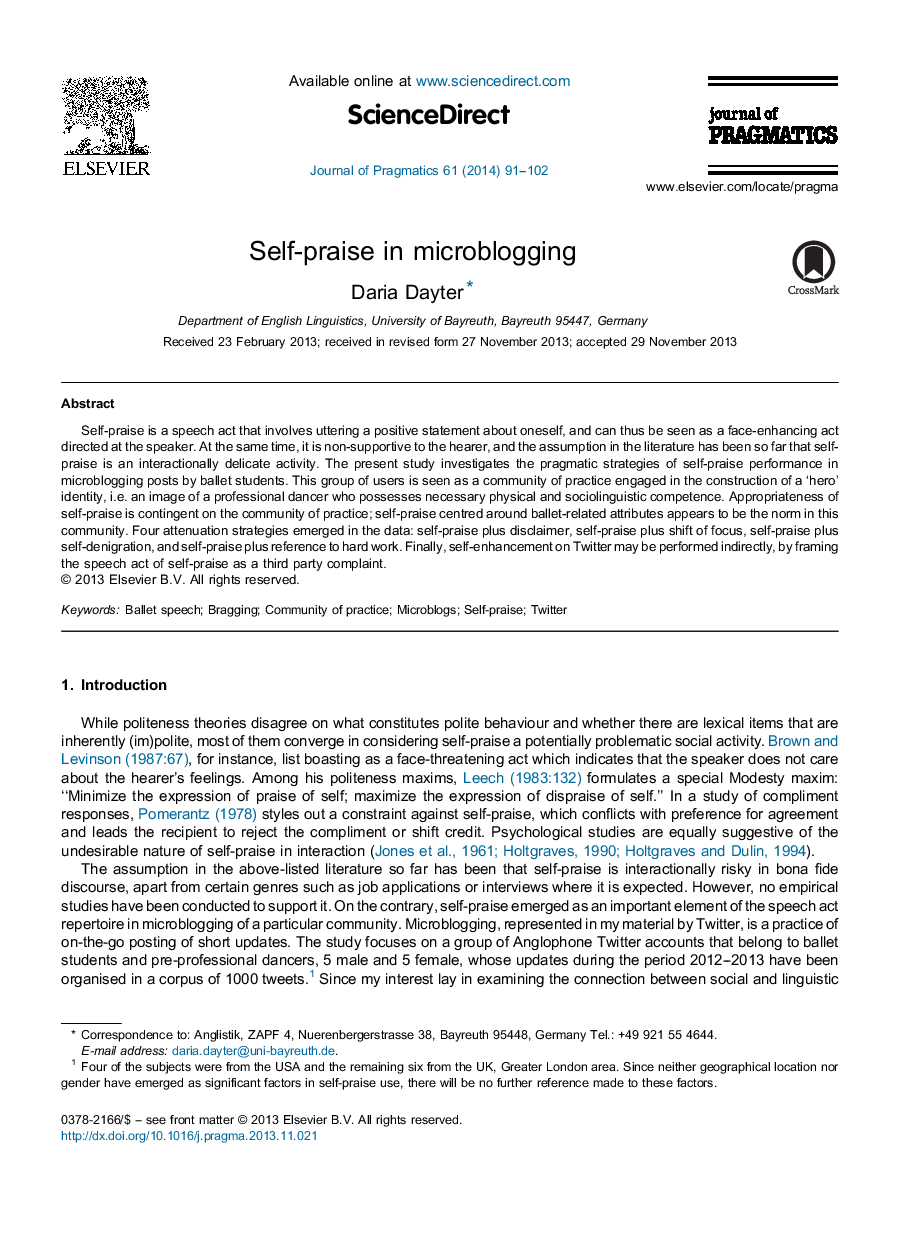| Article ID | Journal | Published Year | Pages | File Type |
|---|---|---|---|---|
| 932784 | Journal of Pragmatics | 2014 | 12 Pages |
•Appropriateness of self-praise contingent on community of practice.•Twitters of ballet dancers’ community exhibit direct non-modified self-praise.•Self-praise may be attenuated by adding a disclaimer or a reference to hard work.•Further modification strategies are a shift of focus, and self-denigration.•Self-praise is performed indirectly by framing it as a third-party complaint.
Self-praise is a speech act that involves uttering a positive statement about oneself, and can thus be seen as a face-enhancing act directed at the speaker. At the same time, it is non-supportive to the hearer, and the assumption in the literature has been so far that self-praise is an interactionally delicate activity. The present study investigates the pragmatic strategies of self-praise performance in microblogging posts by ballet students. This group of users is seen as a community of practice engaged in the construction of a ‘hero’ identity, i.e. an image of a professional dancer who possesses necessary physical and sociolinguistic competence. Appropriateness of self-praise is contingent on the community of practice; self-praise centred around ballet-related attributes appears to be the norm in this community. Four attenuation strategies emerged in the data: self-praise plus disclaimer, self-praise plus shift of focus, self-praise plus self-denigration, and self-praise plus reference to hard work. Finally, self-enhancement on Twitter may be performed indirectly, by framing the speech act of self-praise as a third party complaint.
